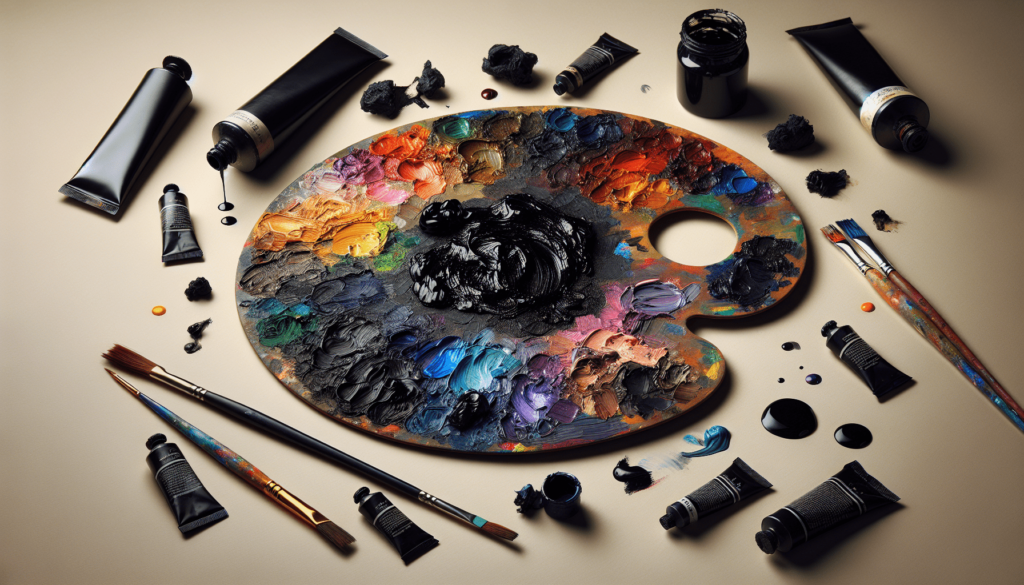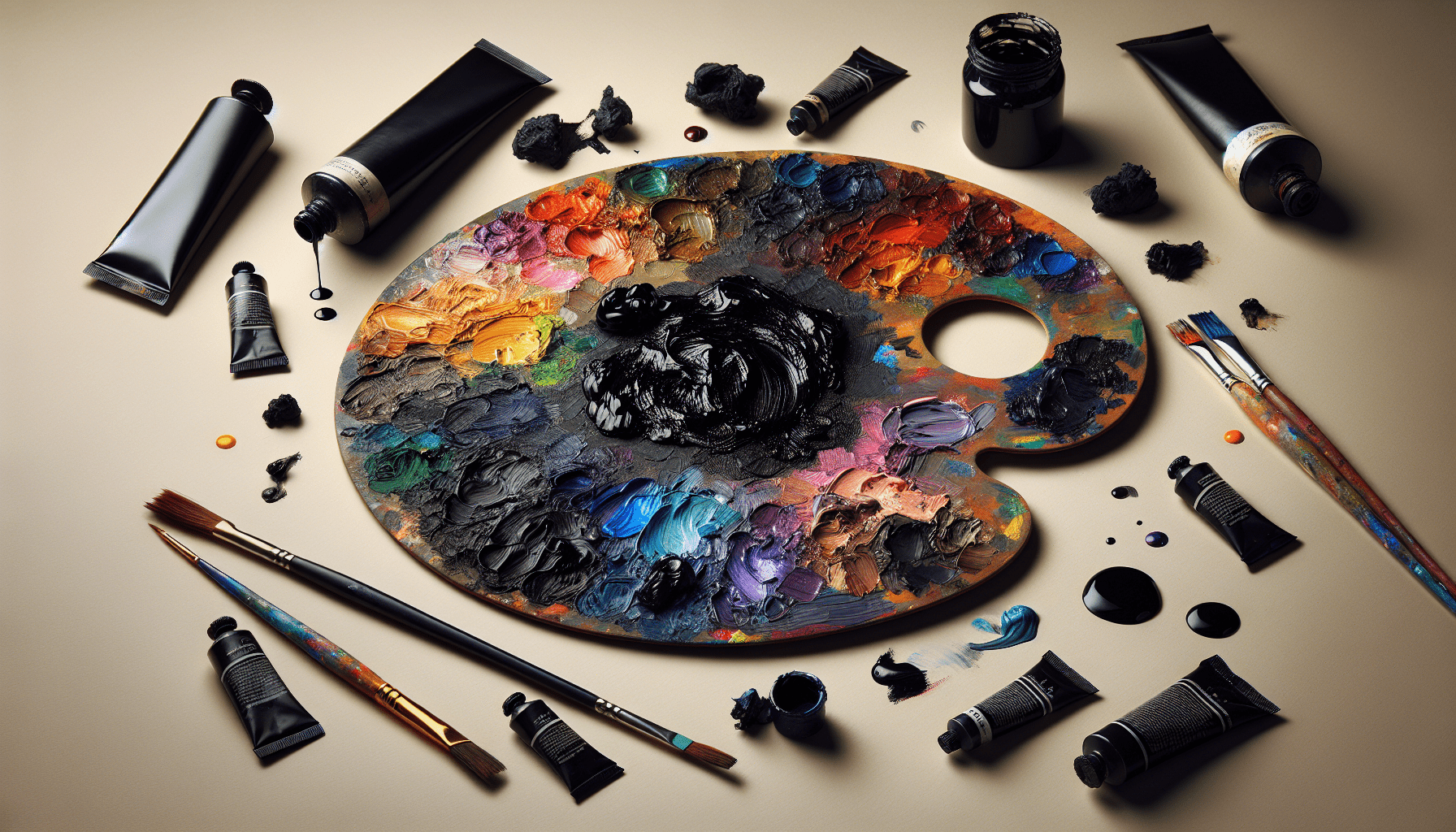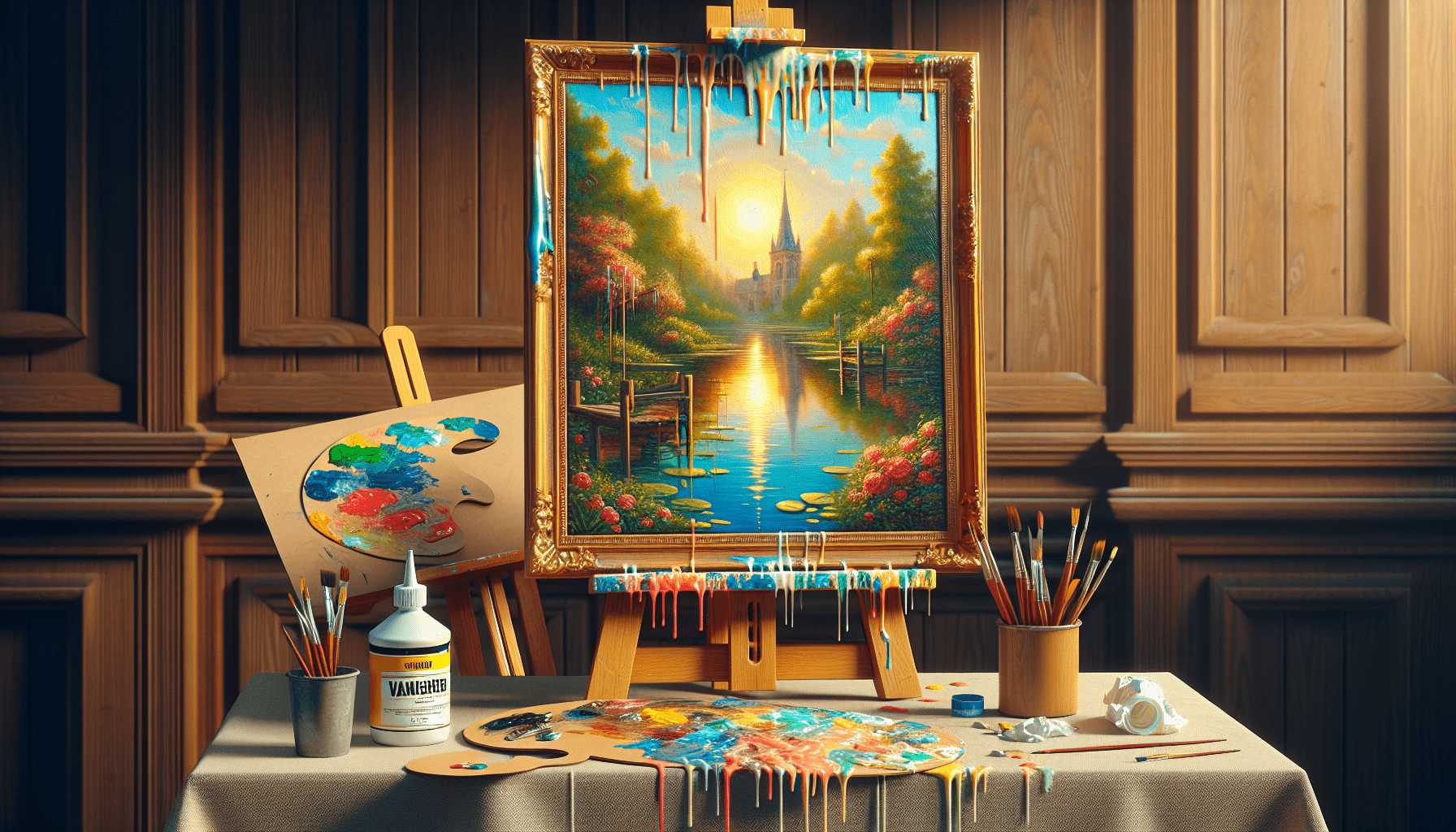How To Make Black With Oil Paint” provides a comprehensive guide on blending various pigments to achieve rich, deep black hues using oil paints. By exploring different color combinations and brush techniques, this article equips you with the knowledge to create depth and texture in your artwork. Understanding how to mix and manipulate colors will elevate your painting skills, allowing you to produce professional and sophisticated pieces. Dive into the art of creating a perfect black and unlock new possibilities in your oil painting endeavors. Have you ever found yourself in the middle of a painting session, only to realize you don’t have black oil paint? Creating the color black through mixing can seem daunting, but with the right techniques and understanding, it’s entirely possible. In this article, you’ll explore how to make black with oil paint, discover various mixing methods, and learn tips to master this essential aspect of painting.

Understanding the Basics of Color Mixing
Before diving into the specifics of making black, it’s logical to grasp the fundamentals of color mixing. This knowledge will help you create not only black but also a wide range of other colors by mixing primary, secondary, and tertiary hues.
Primary Colors
Primary colors consist of red, blue, and yellow. These colors cannot be created through the mixture of other colors, making them the basic building blocks in color theory.
Secondary Colors
Secondary colors are formed by mixing primary colors. For instance:
- Red and blue form purple.
- Blue and yellow form green.
- Red and yellow form orange.
Tertiary Colors
Tertiary colors are made by mixing a primary color with a secondary color. Examples include yellow-green, blue-green, and red-orange.
The Science Behind Creating Black
Creating black requires understanding that black is a result of absorbing all wavelengths of light without reflecting any. In painting, you mimic this absorption by combining other colors. The question is: which colors should you combine?
Why Not Use Black Paint Directly?
Using pre-mixed black paint can sometimes lead to a flat or dull appearance in your artwork. Mixed blacks, on the other hand, can offer varying degrees of depth and richness, making your work more vibrant and nuanced.
Ingredients for Creating Black
Several color combinations can achieve black. Let’s explore these:
-
Complementary Colors:
- Red and green
- Blue and orange
- Yellow and purple
-
Primary Colors:
- Red, blue, and yellow
-
Dark Colors:
- Ultramarine blue and burnt umber
- Phthalo green and alizarin crimson
Step-by-Step Guide: How to Make Black with Oil Paint
Creating a perfect black hue involves methodical steps. Let’s break it down:
Step 1: Choosing Your Colors
Pick the colors you want to use for mixing. The selection depends on the specific type of black you aim to achieve.
Step 2: Preparing Your Palette
Ensure your palette is clean before you start mixing. A well-prepared palette allows for better control and cleaner colors.
Step 3: Mixing the Colors
Combine small amounts of each chosen color. Mix thoroughly to evaluate the outcome. You can always add more pigment, but removing it becomes challenging.
Step 4: Testing the Mixture
Once mixed, test the color on a scrap piece of paper or canvas. This will give you a better idea of how the black looks when painted out.
Detailed Mix Combinations and Their Effects
Complementary Colors
Red and Green
- Result: A deep, slightly warm black.
- Consideration:
- Adjustments may be necessary if the black is too warm or cool.
Blue and Orange
- Result: A balanced black with slightly cool undertones.
- Consideration:
- Useful for shadows and darker areas in a cooler-toned painting.
Yellow and Purple
- Result: A darker, muted black.
- Consideration:
- Ideal for earthy, natural tones.
Primary Colors
Red, Blue, and Yellow
- Result: A versatile and balanced black.
- Consideration:
- Adjust proportions to lean the black towards cooler (more blue) or warmer (more red) undertones.
Dark Colors
Ultramarine Blue and Burnt Umber
- Result: A rich and dark black.
- Consideration:
- Excellent for high-contrast areas and deep shadows.
Phthalo Green and Alizarin Crimson
- Result: A very dark, intense black.
- Consideration:
- Highly saturated, perfect for intense shadows.

Adjusting and Refining Your Mixture
Fine-tuning your mixture is crucial for achieving the exact hue you need. Here’s how:
Lightening Your Black
To slightly lighten your black without turning it grey, add a small amount of white or yellow.
Darkening Other Colors
Use your black mixture to darken other colors without losing vibrancy. This technique is particularly useful for creating depth in shadows.
Balancing Temperature
Control warmth and coolness by adjusting the proportion of each color. Add more red or burnt umber to warm the black or more blue or green to cool it down.
Practical Applications of Mixed Black
Understanding how to apply mixed black effectively can elevate your painting. Below are some practical applications:
Enhancing Depth
Use varying mixtures of black to create depth, from dark shadows to mid-tones.
Creating Texture
Black mixed with white or other light colors can create interesting textures and gradients.
Achieving Realism
Mix your black with earthy tones to mimic natural shadows and highlights.
Troubleshooting Common Issues
Problem: Black Appears Dull
Solution:
- Ensure colors are not over-mixed.
- Use high-quality pigments.
Problem: Black is Too Warm or Cool
Solution:
- Adjust with a complementary color.
- Test small amounts until the desired balance is achieved.
Problem: Black Paint Dries Differently Than Expected
Solution:
- Note that oil paint can darken as it dries.
- Test and adjust your mixture in advance.
Summary and Best Practices
Creating black with oil paint involves understanding color theory, choosing the right color combinations, and fine-tuning your mixtures. Whether using complementary colors, primary colors, or dark pigments, each method offers unique benefits and applications. By testing and adjusting, you can achieve the perfect black for your artwork, adding depth, realism, and vibrancy.
Tips for Further Exploration
-
Experiment Regularly:
- Continuously explore different mixtures to enhance your skills.
-
Learn from Other Artists:
- Study techniques from other painters and incorporate their methods into your practice.
-
Document Your Mixtures:
- Keep a record of successful mixtures for future reference.
By following these guidelines, you’ll not only master the creation of black but also enrich your entire palette, making your artwork as dynamic and expressive as possible.



